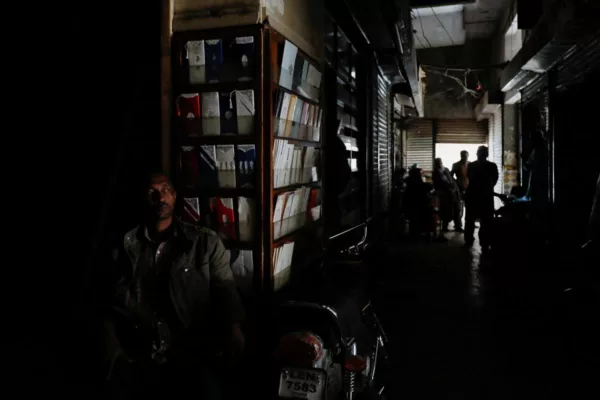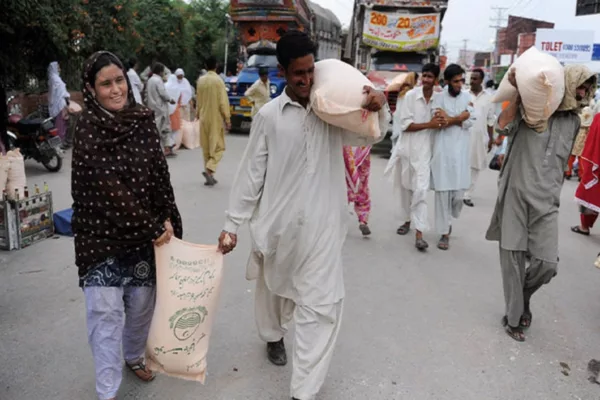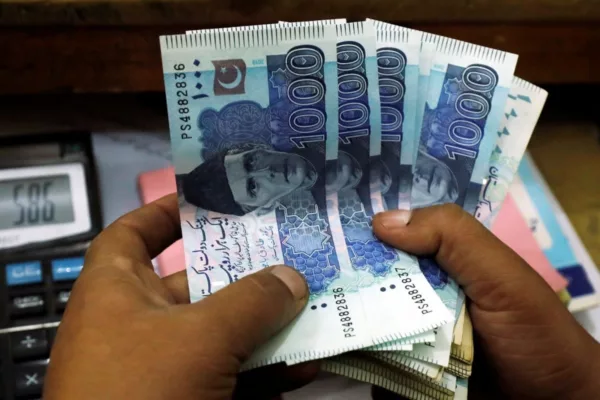Pakistan Crisis: No Money To Hold Elections, No Power, And Other 10 Worrisome Economic Indicators!

Pakistan Crisis: No Money To Hold Elections, No Power, And Other 10 Worrisome Economic Indicators!
The economy of Pakistan has been in free fall for the past few months, and numerous indicators indicate that the nation is facing its worst nightmare since 1971 when it was divided from Bangladesh and lost a war with India. Food, electricity, medicine, and other necessities are in short supply, and the general populace is feeling the effects.
Pakistan‘s national grid broke on Monday morning, January 23. This caused the power to go out all over the country. Media outlets reported that all major cities, including Karachi, Islamabad, Lahore, and Peshawar, were without electricity.
What’s going on, then?

The grid experienced a “widespread breakdown” at 7.34 am, according to a tweet from Pakistan’s Ministry of Energy. It was reported at 7:34 this morning that the National Grid’s system frequency had dropped. As a result, power was lost in large parts of the country. The tweet, originally written in Urdu but translated by Google, appears to report rapid progress in efforts to maintain the system.
A frequency variation was observed between the cities of Jamshoro and Dadu in the southern region of the country when processes were managed to turn on on Monday morning, according to power minister Khurrum Dastagir, according to Reuters. The systems were turned off one by one as a result of a voltage change, according to Dastagir.
Is the situation really that terrible?
Dastagir asserted that the situation was not a serious one and that some of the nation’s grids had already been repaired. According to Dawn, the Minister promised that power would be restored nationwide within 12 hours.
The Energy Ministry tweeted in the middle of the morning, “The restoration of grid stations has begun in Warsak and Islamabad over the past hour. Both Ply Company and Peshawar Supply Company grids are back online, but only for a select few customers.
Who has been affected?
Several major cities in Pakistan have lost power, including Islamabad, Karachi, Quetta, Peshawar, and Lahore, according to DawnNewsTV. Local power provider K-electric reported that the nationwide outage had disrupted service in Karachi, but that repairs were in progress.
Dawn said that a spokesperson for the Quetta Electric Supply Company said that three transmission lines had gone down in Balochistan. According to Muhammad Afzal, the province of Balochistan is experiencing widespread blackouts as a result.
According to a representative of the Islamabad Electric Supply Company, 117 grid stations were damaged in the nation’s capital. A representative told Dawn that maintenance was being monitored in real-time from the foremost control center, and that power was being restored to the system in phases to prevent damage.
How would you describe Pakistan’s overall power structure?

Pakistan has had widespread power outages for quite some time, and worst-case scenarios predict that this will continue for at least a few more years. The crisis reached its apex that summer of 2022, resulting in widespread blackouts across the country. According to a report from the Daily Times in early June, power outages in Karachi can last up to 15 hours, while in Lahore, they can last for almost 12 hours.
As a percentage of Pakistan’s gross domestic product, power sector investments have remained stagnant or declined for decades. The country’s power plants, which rely heavily on imported fuel, were hit hard by the worldwide supply shock caused by the water crisis in Ukraine and the subsequent post-pandemic demand surge. When fuel prices spiked and the Pakistani rupee plummeted against the strengthening dollar, Pakistan’s energy import costs skyrocketed.
The state of the economy as measured by these metrics may shed some light.
-
Forex Exchange is at its lowest level in 9 years
A Geo News report found that Pakistan’s foreign exchange reserves had dropped to an all-time low of $4.56 billion, or enough for only three weeks’ worth of imports. For a nation like that, which relies so heavily on foreign goods, this is a catastrophe. The reported decrease in funds is supposedly the result of two banks in the United Arab Emirates paying back USD 1 billion in commercial loans.
- Fiscal deficit 43%
Pakistan’s fiscal deficit grew by 43 percent between July and September of 2023, according to a document on Pakistan Revenue that used data from the ministry of finance. The report went on to explain that the country’s budget deficit increased from 0.7% to 1.0% of GDP in the first quarter of the current fiscal year.
- Soaring cost of living

As reported by the media in Pakistan, the Sensitive Price Indicator (SPI) for the week ending January 19, 2023, rose 32% Year on Year (YoY). Meanwhile, analysts have been dropping hints about a further increase of 100 basis points that would bring the benchmark rate to 17%.
-
Increasing Inflation Caused by Rising Wheat Prices
Pakistan relies heavily on imports, especially from Russia and Ukraine, to meet its daily food needs. Just before hostilities broke out, Pakistan was importing $1.01 billion worth of wheat from the two countries. However, the supply chain has been severely disrupted as a result of the conflict between Russia and Ukraine. Pakistan is experiencing a severe grain shortage, which has caused significant price increases, on account of both natural disasters and human error.
- The current exchange rate for the Pakistani Rupee to the US Dollar is $229.

The value of the Pakistani Rupee against the US Dollar is another grim sign of the stress the country is under. The interbank foreign exchange market is tumultuous, with the PKR/USD rate hovering around 229. This is due to the combination of rising import payments and decreasing inflows under exports and remittances. The decline in exports and remittances also contributed to the rupee’s decline in value.
-
With a $ 3.66 billion gap in current accounts
In the first six months (July–December) of Pakistan’s fiscal year 2022-2023, the deficit shrank by 60% to $3.66 billion. As of the same period last fiscal year, the current account deficit totaled $9.09 billion. According to the Pakistan Bureau of Statistics, the import bill has dropped by 23% to $31.38 billion over the first half of the current fiscal year.
-
Gas suppliers in Italy will reduce output
ENI, an Italian LNG trading company, has announced that it will be unable to deliver the next cargo, which is expected to exacerbate the country’s fuel crisis. The News was quoted by Geo News as saying, “The gas deficit will increase because the amount of imported LNG will drop to 700 mmcfd.
In February, only 5 cargoes priced at 13.37% of Brent and 2 cargoes priced at 10.2% of Brent would be accessible per GtG agreements with Qatar. Therefore, the cost of ENI LNG cargo will rise by 12.14 percent in February, because there will be nobody to purchase at the current rate. The nation’s gas shortage won’t get any worse as a result of this.
- Payments on IMF loans are late
Even the International Monetary Fund (IMF) wouldn’t lend to the government because of its inability to meet the condition that gas and diesel prices be increased. Until there is more transparency from the government, the International Monetary Fund will not approve its 24th loan, further entangling the country.
-
The Arab world reaches out to help
According to Geo News, the Abu Dhabi Fund for Development (ADFD) has granted an additional $1 billion in loan funding in addition to renewing the existing $2 billion loan. The SBP’s current foreign exchange reserves of $4.5 billion are equivalent to three weeks’ worth of import bills at the government institution.
-
Suggestions from Pak’s wealthiest entrepreneur
Miya Masha, Pakistan’s wealthiest businessman and often referred to as the country’s “Ambani,” has urged the government to drop its obstinate stance and resume trade talks with India by opening the country’s borders. To head off the impending crisis, he recommended that the government work quickly to reach a settlement with the IMF and do everything in its power to entice foreign investors.
edited and proofread by nikita sharma




